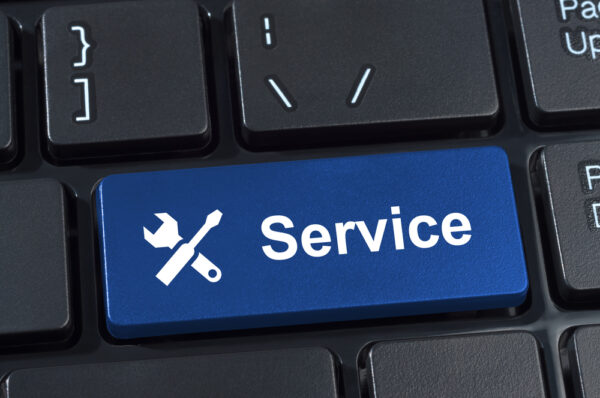
Despite their best efforts, maintenance teams can’t anticipate every equipment problem. Instead, they rely on anyone who notices an issue – employees, tenants, and other stakeholders – to alert them. These reports come in the form of maintenance requests, which play a vital role in identifying and resolving problems quickly. In this article, we’ll explain what a maintenance request is and how it fits into the maintenance management process.
What is a Maintenance Request?
A maintenance request is a formal notification submitted to the maintenance team to report an issue that needs attention, such as an equipment malfunction, damage, or an emerging problem. These requests typically come from individuals outside of the maintenance department – such as machine operators, employees, or tenants – who notice issues that need attention.
While maintenance requests are commonly used to report a wide range of issues, they are typically submitted for non-urgent problems that do not immediately impact safety or production.
Maintenance requests may also be referred to as work requests, service requests, or maintenance tickets depending on the industry or organization.
Maintenance Request vs. Work Order
Although the terms “maintenance request” and “work order” are often used interchangeably, they refer to different stages in the work order management process.
A maintenance request is an initial request for action, typically coming from someone outside the maintenance team. It outlines a problem but does not authorize work to begin. This is similar to a purchase requisition, which communicates a need but isn’t an approved purchase.
A work order, on the other hand, is a formal authorization to perform maintenance work. It includes specific information such as the work to be done, required parts, assigned labor resources, and scheduling details. Work orders may originate from maintenance technicians or from approved maintenance requests.
Learn more about maintenance work orders.
The Role of Maintenance Requests in the Maintenance Process
Maintenance requests play a critical role in ensuring maintenance issues are identified and addressed in a timely manner.
For non-maintenance employees, tenants, and other requesters, submitting a maintenance request provides a clear, documented way to report issues to the maintenance team. It also allows them to track the status of their requests from the point of submission through completion, increasing transparency and accountability.
For the maintenance team, maintenance requests bring attention to issues that might otherwise go unnoticed. In this sense, requesters act as an extension of the maintenance team, providing valuable insight into equipment performance and condition. Over time, the data collected from maintenance requests can also help inform decisions about maintenance strategy.
Maintenance requests also provide a standardized format for reporting issues. This helps ensure the maintenance team receives all the necessary information upfront before deciding whether to approve the request, and reduces the back-and-forth communication caused by incomplete or unclear requests.
What to Include on a Maintenance Request Form
The information included on a maintenance request form depends on your organization’s needs. In smaller organizations, a simple description may be enough. However, in asset-intensive or multi-site environments, more detailed information helps ensure faster resolution and more accurate work assignments.
Below are the most common fields included on a maintenance request:
- Problem Description: A clear description of the issue requiring maintenance assistance. Requesters should be encouraged to provide as much relevant detail as possible to avoid follow-up and miscommunication.
- Requester Contact Information: Includes the name, email address, and phone number of the requester. This allows the maintenance team to follow up if clarification is needed and can also help identify recurring requests from the same customer.
- Request Date and Time: The time and date the request was submitted. Including this information can help the maintenance team prioritize tasks, track response time, and maintain an accurate service history.
- Asset: The asset name and number, if available. Identifying the specific asset enables technicians to quickly locate it in the maintenance tracking system, check past work history, and gather any required documentation or parts.
- Location: The physical location of the issue or asset. Accurate location details help maintenance technicians find the problem quickly, especially in large facilities and buildings.
- Priority: Allows the requester to indicate the urgency of the issue. While the final priority may be adjusted by the maintenance team, this information provides context into how the problem affects the requester.
- File Attachments: If submitted through a computerized system, requesters can often attach photos or videos. Visual documentation can help maintenance teams assess the situation remotely and arrive prepared with the right parts or tools.
Who Submits Maintenance Requests?

Anyone who encounters a maintenance issue can submit a maintenance request. The specific individuals or groups submitting requests often depend on your organization’s structure or industry. Below are some of the most common requesters.
Machine Operators
Machine operators submit maintenance requests when they find abnormalities during routine inspections or experience problems that disrupt normal operation. These problems may include unusual noises, decreased performance, or malfunctions that could cause equipment damage or production downtime. Operators are a valuable source of information as they have a deep knowledge about their equipment and can catch early warning signs before small issues become costly repairs.
Non-Maintenance Employees
Non-maintenance employees may submit maintenance requests for issues that impact their workspace, safety, or ability to do their jobs. Common examples include:
- Burnt-out lights, HVAC problems, and issues with electrical systems
- Broken garage doors preventing shipments from being sent or received
- Equipment jams and minor malfunctions not handled directly by a machine operator
- Damaged racking, leaking roofs, or other hazards in warehouses or industrial spaces
By reporting these issues, maintenance becomes a facility-wide effort that helps ensure an efficient work environment.
Tenants
In a property management setting, maintenance requests are often submitted by tenants and building occupants – and occasionally property staff. These requests are typically used to report broken appliances, water leaks, pest problems, or damage within units or shared spaces. Most requests are submitted through an online request portal and are handled by the property’s maintenance team.
Learn more about property maintenance.
Customers
Maintenance service providers may receive requests from customers they support. These customers typically contract the provider to perform specialized maintenance services, including routine inspections or corrective repairs. Customers submit requests whenever they encounter an issue that requires the provider’s expertise.
Supervisors and Managers
In some organizations, supervisors, team leads, or department heads submit requests on behalf of their staff or escalate maintenance concerns that affect broader operations. These roles act as the designated point of contact between staff and the maintenance team.
The Maintenance Request Workflow
The ultimate goal of a maintenance request is to initiate maintenance work by generating a work order. While every organization handles incoming requests differently, most follow a general workflow to review them and turn them into actionable tasks.
In some organizations, all maintenance requests automatically become work orders. However, many organizations implement a review process to ensure requests are complete, valid, and not duplicates. A typical workflow looks like the following:
- Submission: A requester submits a maintenance request, providing as much detail as possible.
- Initial Review: A request administrator (often a maintenance planner or coordinator) reviews the request for completeness. If required information is missing, they follow up with the requester for clarification.
- Duplicate Check: The administrator checks whether the issue has already been reported or is being addressed by an open work order.
- Request Update: The administrator may update key fields, such as priority level, asset ID, or location, to ensure accuracy.
- Approval: Once verified, the maintenance request is approved and converted into a work order.
- Work Order Assignment: A maintenance manager or planner adds additional details to the work order – such as the required tasks, parts, and scheduling information – then assigns it to a technician.
- Completion and Notification: Once the work is completed, the requester is notified and the maintenance history is recorded.
A standardized maintenance request workflow helps organizations respond efficiently, avoid duplicate work, ensure quick response times, and track requests throughout.
Maintenance Request Approval Considerations
Not every maintenance request becomes a work order. When reviewing incoming requests, administrators must consider several factors before approving them. These may include:
- Redundancy
- Maintenance budget
- Asset criticality
- Severity of the problem
- Labor availability
- Part availability
- Maintenance strategy for the asset
These factors help determine whether maintenance requests are approved, deferred, or denied. A formal review process allows maintenance teams to prioritize resources and ensure that only necessary and actionable work is passed along to technicians.
Managing Requests with Maintenance Request Software

Many organizations use maintenance request software to help streamline maintenance request submission, review, and tracking. These tools – often included in a computerized maintenance management system (CMMS) – provide a single channel for submitting requests, help standardize incoming requests, reduce paperwork, and ensure quick response times. To learn more about how a CMMS supports maintenance request management, read our article on maintenance request systems.
Unlock the Power of Maintenance Requests with FTMaintenance Select
Maintenance requests provide valuable documentation that brings visibility to maintenance issues across your organization and offer insight into how those issues affect requesters. Empowering employees, tenants, and customers to submit requests helps you deliver better service, improve customer satisfaction, and build trust in the maintenance team.
FTMaintenance Select CMMS includes easy-to-use maintenance request tracking software that allows requesters to submit requests through a customizable online form, accessible via web browser or the FTMaintenance Select mobile app. Request a demo today to see how FTMaintenance Select helps you stay on top of maintenance needs and keep your operations running smoothly.